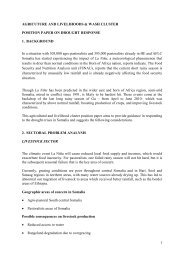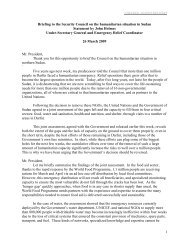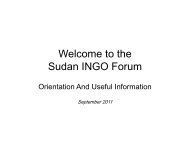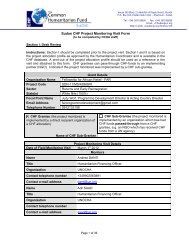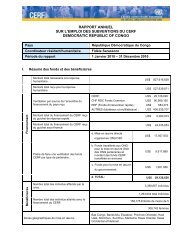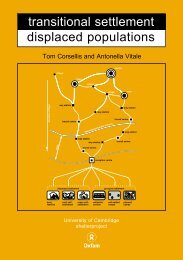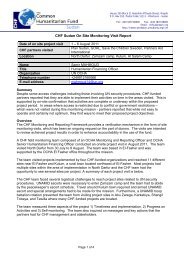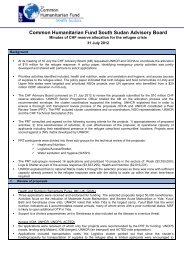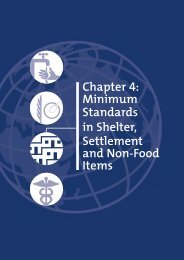Ethiopia - OCHANet
Ethiopia - OCHANet
Ethiopia - OCHANet
Create successful ePaper yourself
Turn your PDF publications into a flip-book with our unique Google optimized e-Paper software.
3.3 Coordination<br />
132. Coordination in <strong>Ethiopia</strong> is complex, like so many aspects of the development and humanitarian<br />
system (see fig 16). This reflects both the number of agencies involved and the time over which<br />
systems have evolved. The system is also in continued transition, pending a new National Policy<br />
and Strategy on Disaster Risk Management.<br />
133. <strong>Ethiopia</strong> first established a government entity for the coordination of humanitarian assistance<br />
following the 1973 famine. The Relief and Rehabilitation Commission (RRC) initially enjoyed a good<br />
reputation and was recognised for establishing best practice at the time. Following the Dergue take<br />
over and subsequent war against the north, the RRC became increasingly politicised, and eventually<br />
during the 1984 famine, discredited. In 1993 it was reorganised to become the Disaster Prevention<br />
and Preparedness Commission (DPPC), reporting to the National Disaster Prevention and Preparedness<br />
Committee (NDPPC) which was initially chaired by the prime minister, and subsequently<br />
by the deputy prime minister.<br />
134. In 2007 the DPPC was disbanded and integrated into the Ministry of Agriculture and Rural<br />
Development (MoARD), becoming the DRMFSS, with a State Minister at the head and comprising<br />
two directorates – early warning and response and food security.<br />
135. A new Disaster Risk Management Policy has been in development since 2009. This,<br />
if approved by the Council of Ministers, will radically change the system once again, seeking to<br />
mainstream disaster preparedness and prevention into development work, and decentralise both<br />
decision making and capacity in line with the constitution and the federal structure. In the interim<br />
the DRMFSS and the NDPPC remain the decision making bodies for disaster response overseeing<br />
such key processes as the assessment and HRD, and the strategic food security reserve (ESFRA).<br />
136. The strength of the system means that the cluster system of coordination has been adapted<br />
to be useful in 2011, as was the case in 2006. Instead of formally activating all parts of the cluster<br />
system, the sector task forces put in place for development programming switch to emergency<br />
mode when needed. They are in turn supported by the appropriate cluster lead agencies in making<br />
this switch. This should be viewed as a success and hugely important in pursuing a resilience<br />
agenda for the future.<br />
137. In 2011 the DRMFSS introduced a new strategic coordination body for multi-agency coordination<br />
(S-MAC) at the federal level and a technical equivalent (T-MAC). This is chaired by the state<br />
minister and effectively binds together the Government system with its international partners<br />
who meet separately in the <strong>Ethiopia</strong> Humanitarian Country Team (EHCT).<br />
138. This latest innovation has proven to be successful by allowing strategic bottlenecks to be<br />
resolved and for better dialogue between the various agencies involved to be put in place. It arguably<br />
did not meet as often as it could have, with the EHCT playing the major coordination role for<br />
international actors. There are now moves to establish this forum as a permanent entity.<br />
139. The SMAC is jointly chaired by the Humanitarian Coordinator (HC) who has quietly played<br />
an important role in facilitating dialogue between government and international agencies.<br />
41




